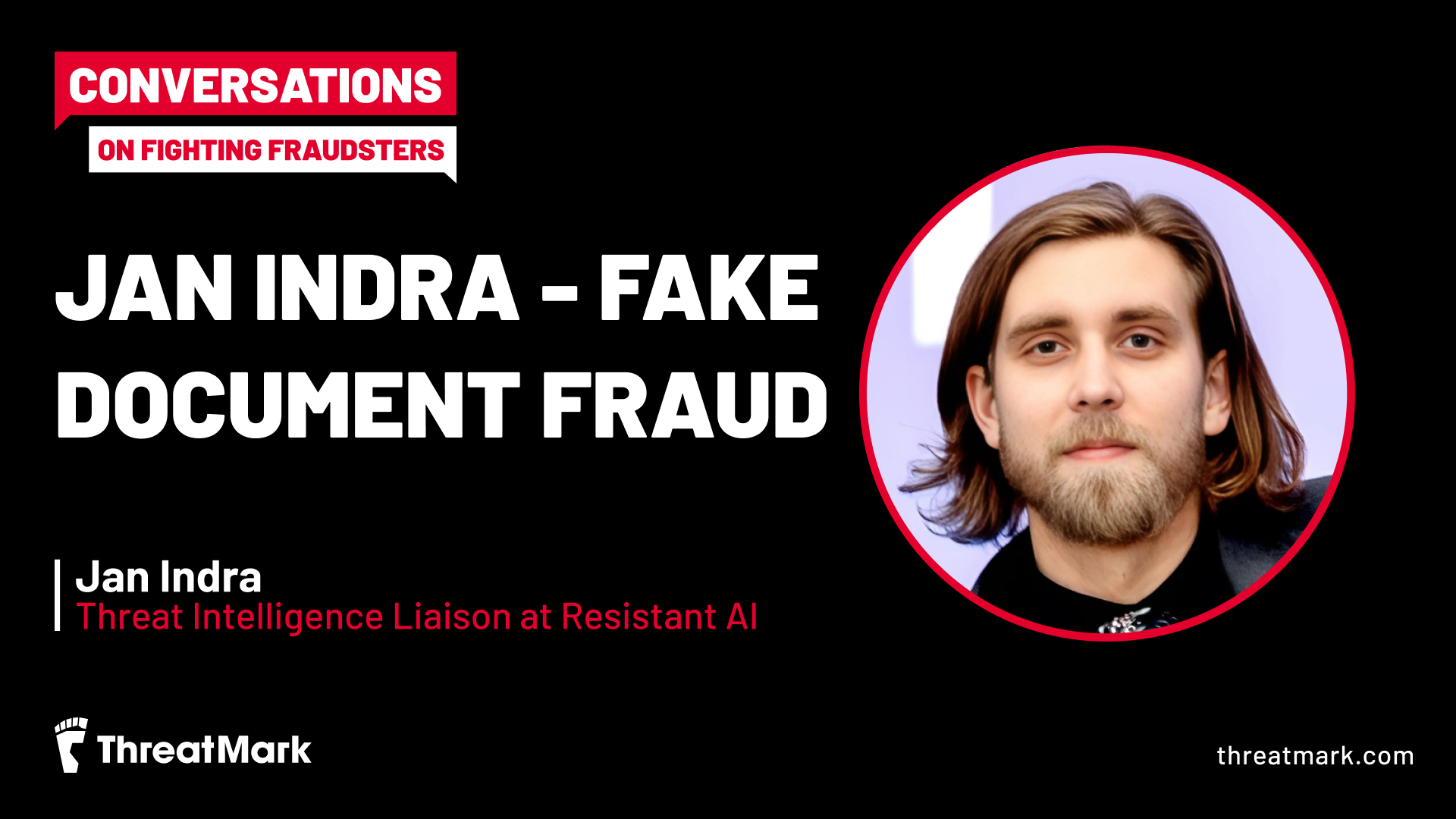
Authority Bias Scams: Why Customers Fall for Them and How Banks Can Fight Back
Authority bias fuels modern scams. Behavioral signals can help banks stop them.
Scams driven by social manipulation are surging. In Europe alone, cases jumped by 156% in 2024. But why do people, regardless of age, background, or education, continue to fall for these schemes in such high numbers? What makes them so effective? The answer often lies in authority bias. Fortunately, with the help of AI and behavioral intelligence, banks now have powerful ways to counter this vulnerability.
Cognitive Biases in Scams
Humans are naturally influenced by cognitive biases—mental shortcuts that help us make decisions quickly and with less effort. These mechanisms evolved to make life easier by reducing cognitive load. But there’s a downside: they can also lead us to jump to conclusions too quickly, especially when someone deliberately exploits them.
This is why social engineering has become scammers’ weapon of choice. They know how these mental shortcuts work and they use them to manipulate people into acting against their own interests. Among the many biases they exploit, one stands out as both the most common and the most dangerous: authority bias.
What Is Authority Bias
Authority bias is one of the many well-documented cognitive biases. It describes our tendency to give greater weight to the opinions and instructions of perceived authority figures. We trust and obey even when those figures may be mistaken or, in the case of scams, not real authority figures at all.
A famous example comes from psychologist Stanley Milgram’s experiments in the 1960s. Participants were instructed by a man in a lab coat to administer electric shocks to another person. Despite hearing apparent cries of pain (which they did not realize were staged), many continued simply because the “authority figure” told them to. The lesson is clear: under the influence of perceived authority, people are often willing to override their own judgment.
Authority bias scams exploit this same dynamic today by impersonating roles that carry authority and demand compliance: bank staff, police officers, or government officials. The results can be devastating. Recent analysis from the Federal Trade Commission shows that reports of older adults losing $10,000 or more to impersonators posing as trusted government agencies or businesses have more than quadrupled since 2020, highlighting the urgent need for authority bias fraud prevention in banking.
How Scammers Exploit Authority Bias
Authority bias gives scammers a shortcut straight past their victims’ critical thinking, which is why so many social engineering authority scams are able to bypass doubt and caution. When someone appears to speak with authority, people are less likely to question the information, and more likely to act quickly. That is exactly what fraudsters want.
By exploiting authority bias, scammers create a psychological imbalance:
- They lower resistance – Victims hesitate to challenge someone they perceive as being “in charge.
- They trigger urgency – Authoritative instructions often come framed as urgent tasks, leaving little time for reflection.
- They shift responsibility – Victims may feel that if an authority figure told them to act, the risk of being wrong doesn’t rest on their shoulders.
This combination makes authority bias one of the most powerful levers in social engineering. It overrides doubt, reason, and even personal discomfort. That’s why nearly every major scam type builds on it in some form.
Explore the future of scam prevention
Common Authority Bias Scams
Authority bias shows up in almost every major scam type. Some of the most common examples include:
- Impersonation of bank staff – Fraudsters pose as “security officers” or “fraud specialists,” instructing victims to transfer money to a so-called safe account or verify their credentials.
- Police or government impersonation – Scammers claim to be law enforcement, tax authorities, or regulators, pressuring victims with threats of fines, legal action, or arrest.
- Tech support scams – Criminals impersonate IT help desks or well-known companies like Microsoft or Apple, convincing victims to install remote access tools or disclose login details.
- Investment and advisory scams – Fraudsters masquerade as brokers or financial advisors, using their “expert” status to persuade victims to move money into fraudulent investment schemes.
- CEO fraud / Business Email Compromise (BEC) – Attackers impersonate executives or senior managers, instructing employees to make urgent wire transfers or share confidential data.
- Utility or service provider scams – Posing as energy companies, telecoms, or delivery firms, scammers create pressure by claiming unpaid bills or missed deliveries.
Why Authority Bias Scams Work
Authority bias is one of the most powerful cognitive shortcuts we have. Its strength has deep roots:
- Evolutionary origins – Throughout history, following leaders increased our chances of survival. Deferring to authority meant safety in numbers and coordinated action.
- Early conditioning – From childhood, we are taught to listen to parents, teachers, doctors, and other authority figures. This habit of compliance becomes deeply ingrained.
- Perceived expertise and credibility – We naturally assume that authority figures know more than we do, and we give their opinions greater weight than those of peers.
Scammers exploit these tendencies through tactics such as fake documents, urgent warnings, or official-sounding language. Often, authority bias is combined with other cognitive biases like loss aversion (fear of losing money) or reciprocity bias (the pressure to return a favor or act after receiving something, even if it’s just attention or assistance) to make the manipulation even more persuasive.
Learn more about fake document fraud in our podcast episode with Jan Indra.
How Can Banks Fight Authority Bias Scams?
Effective authority bias fraud prevention is critical. Because these scams exploit the human element, traditional fraud detection systems may miss them. Transactions appear legitimate when initiated by the genuine customer, on a recognized device, from a familiar location. And even the most advanced systems can fail if the customer insists on proceeding under the influence of a fake authority.
To protect both their customers and their reputation, banks need a layered strategy for authority bias fraud prevention that tackles the problem from three angles: customer empowerment, real-time behavioral intelligence, and intervention and guidance.
Customer Empowerment
Helping customers recognize manipulation is the first line of defense. Awareness campaigns play an important role by teaching people about scam tactics and the tricks fraudsters use to carry out authority bias scams. However, awareness alone often falls short. Once a person is in the grip of manipulation, the lessons they’ve learned can vanish.
That’s why banks are increasingly turning to real-time interventions, such as ThreatMark’s ScamFlag. This solution leverages generative AI to let customers check messages, emails, or requests as they receive them, providing instant feedback on whether the content is legitimate or fraudulent.
Learn more about ScamFlag
Behavioral Intelligence
In everyday life, we can read subtle signs when someone is under pressure—acting unnaturally, appearing nervous, or rushing. In digital banking, technology must play that same role as a vigilant observer. Behavioral intelligence analyzes how users interact with banking apps and detects clues that a customer may be acting under the influence of a fraudster.
Some signs that a customer may be acting under authority pressure in a digital banking environment include:
Behavioral Anomalies
- Hesitation or repeated navigation – going back and forth, as if double-checking instructions.
- Unusual typing patterns – slower keystrokes, long pauses, or copy-pasting detailed instructions.
- Extended or unusual session times – staying logged in much longer than usual, often due to coaching.
Contextual Indicators
- Active phone call or messaging during the session – suggesting the customer is receiving real-time instructions.
- Screen sharing or remote access tools detected – signs that a third party has direct visibility or control of the device.
- Device or channel switching – moving between phone, email, and app while executing instructions.
Transaction Anomalies
- Transactions outside normal patterns – unusually large amounts, urgent transfers, or payments to brand-new recipients.
Behavioral intelligence can detect and interpret these signals in real time. By analyzing them together—rather than in isolation—it gives banks the context needed to recognize when a customer is under manipulation and to intervene before money leaves the account.
Explore our behavioral intelligence
Intervention and Guidance
Even with alerts and warnings, some victims insist on completing the transaction, convinced by the scammer’s authority. This is where direct intervention and skilled guidance become critical. Fraud teams and call center staff can apply proven techniques to disrupt the manipulation and help customers regain perspective:
- Gaining time – Fraudsters rely on urgency. Pausing or suspending the transaction, or requiring a branch visit for risky transfers, gives the victim space to reflect. This extra friction often breaks the scammer’s hold.
- Sharing victim stories – Customers may feel ashamed to admit they’re being deceived. Hearing that others have fallen for similar scams reduces stigma and opens them up to reconsidering.
- Appealing to self-protection – Reframing the decision as protecting their own family, savings, or reputation can resonate more strongly than abstract warnings.
- Re-establishing legitimate authority – Positioning the bank as the true authority (“As your bank, we are legally responsible for your safety. That’s why we must stop this transaction.”) can counter the influence of fake authority figures.
By combining these intervention and guidance techniques with behavioral detection and customer empowerment, banks can effectively neutralize authority bias before it results in irreversible loss.
Building Bias-Aware Defenses
When scams exploit authority bias, banks often find themselves in a direct clash of credibility—fraudsters posing as “authorities” on one side, the real financial institution on the other. In these moments, the customer’s perception of who to trust becomes the deciding factor. That’s why building a long-term relationship with clients is essential. Banks must consistently reinforce their role as trusted experts while avoiding judgment or blame. Dismissing victims only feeds into other biases and deepens their vulnerability.
To stay ahead, banks need to recognize that fraud prevention is not just about technology but also about psychology. Incorporating bias-aware prevention methods—combining customer empowerment, real-time behavioral intelligence, and skilled intervention—offers the best chance of disrupting scams before losses occur. By addressing authority bias scams directly, banks can protect their customers, strengthen trust, and reclaim the role of the true authority in digital finance.



